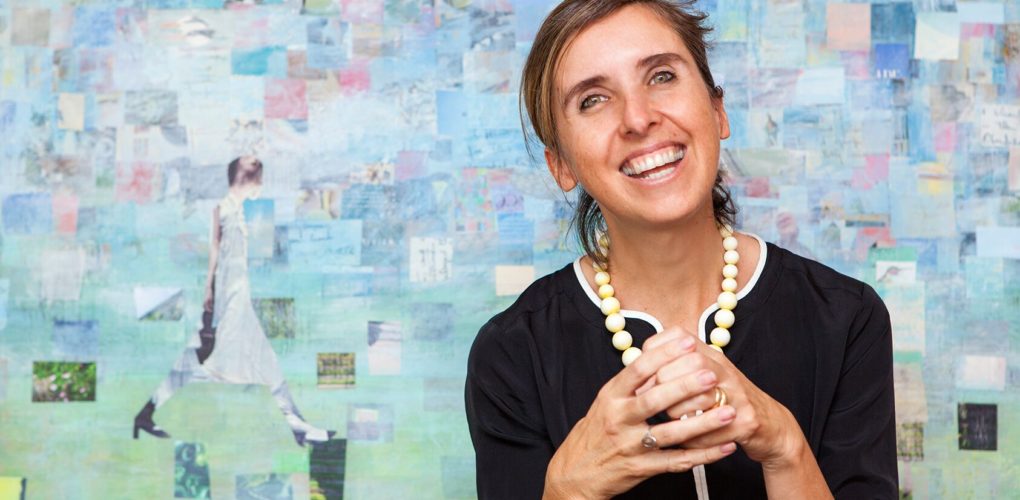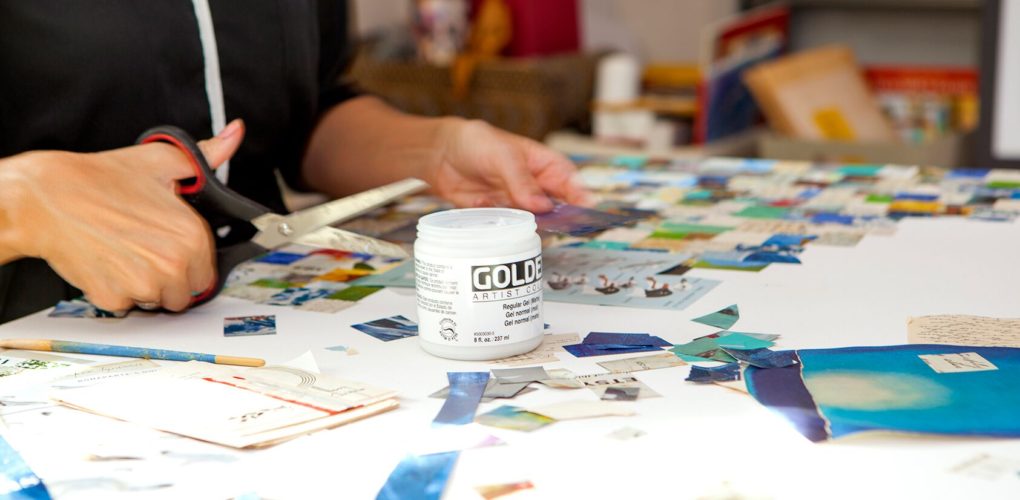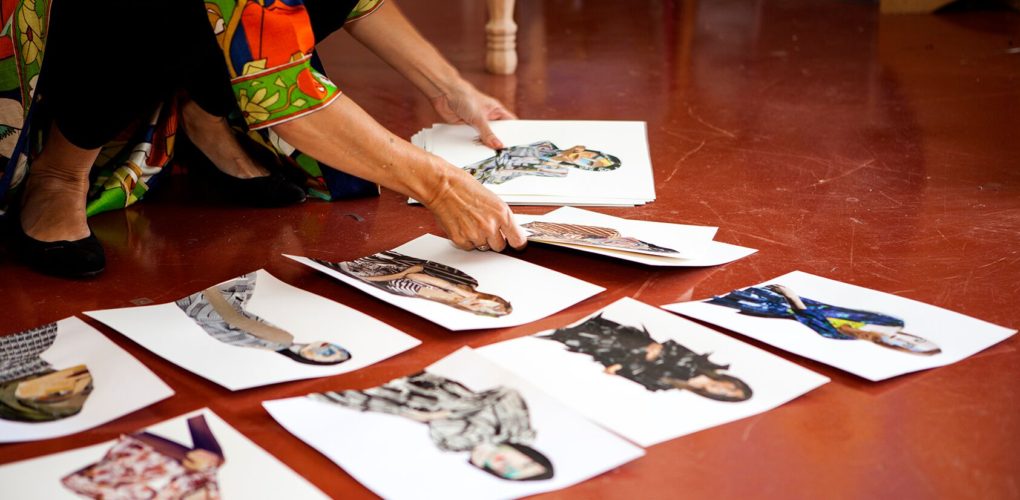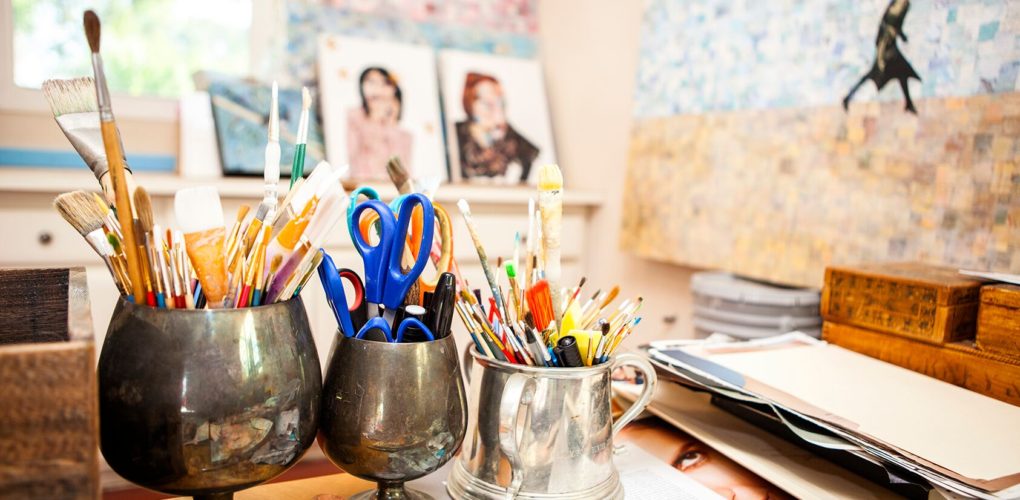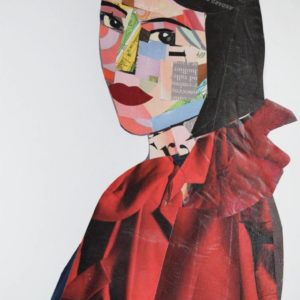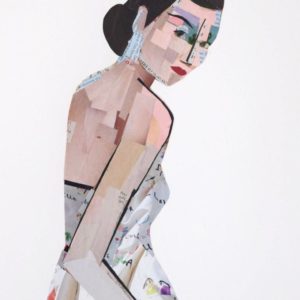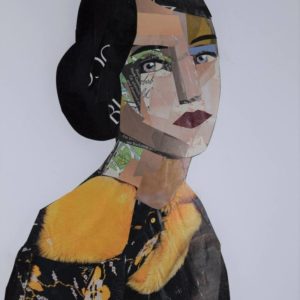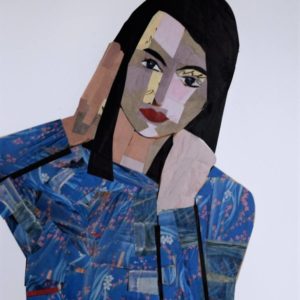Inside the Studio
 Olan Quattro Uses Memory and Fashion to Create Collages
Olan Quattro Uses Memory and Fashion to Create Collages
What are the major themes you pursue in your work?
My work references memory and fragmentation. In my larger works, I layer old family letters, photographs and book pages underneath my image. I’m interested in how memory can be curated and redefined. My collages are memory landscapes, quiet images pulled and manipulated from a distant past. In my portrait series, I use fashion magazines as my palette and create the figures from scraps of text and color from the magazines. It intrigues me to create texture and complexity from smooth, glossy pages. Their beauty lies within their layers.
How did you first get interested in your medium, and what draws you to it specifically?
I have always been drawn to collage. I come from a family of artists and writers. My inheritance is the paper, drawings, letters, journals, ticket stubs and photographs from my relatives going back generations. I have travelled and moved with boxes and suitcases filled with the debris of forgotten lives. Collage is my way to tell stories, to write poems, to paint pictures. Collage is how I make sense of the world.
How has your style and practice changed over the years?
Currently, I feel like a culmination of what I have been working on for the past 15 years is coming together. At times I have been more literal in my approach to collage and to telling a certain story. A number of years ago I did a series in which I created a collage from each consecutive page from a Vogue Magazine. I made 400 collages from one September issue. That project forced me to leave white space and to be more minimal. That was transformative in my work. It taught me to be very deliberate and bold in my artistic choices.
Can you walk us through your process? Do you begin with a sketch, or do you just jump in? How long do you spend on one work? How do you know when it is finished?
For my larger work, I begin by cutting squares of paper from my stashes of old letters, photos and books. Sometimes I live with the covered canvas for a few weeks before I know what I want to do with it. It can be challenging to know when it is finished. It is always tempting with collage to keep going. But it is so important to know when to stop. With my portraits, I sometimes work with a sketch, or a relationship of a face and a hand. Then I build my palette. I look for colors and text within magazines and letters and let the colors do the work.
If you couldn’t be an artist what would you do?
I would be a poet. I love poetry because each word is so vital. And the choice of one word next to another is one that takes a great deal of deliberation. I love the way words can change depending on who they are standing next to.
Who are some of your favorite artists and why?
Milton Avery for his color and his moods. Sally Michel for her figures and dreaminess. Alex Katz for his portraits and the way he creates emotional depth with such flat colors. Matisse for his whimsy. Helen Frankenthaler for her lightness and color.
